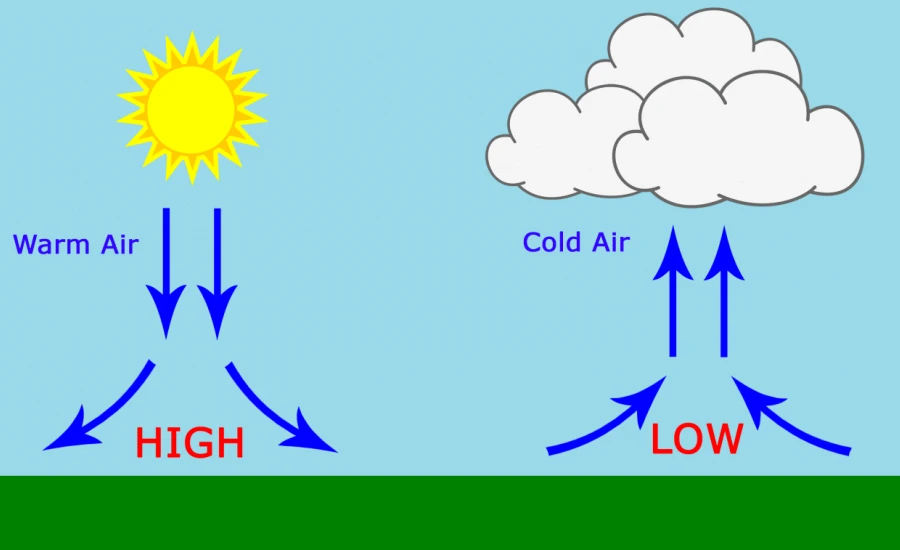
# Ambient Pressure Definition and Its Significance in Various Applications
## What Is Ambient Pressure?
Ambient pressure refers to the pressure of the surrounding environment at any given location. It’s the force exerted by the atmosphere or any other surrounding medium (such as water in underwater environments) on objects within that environment. At sea level on Earth, standard ambient pressure is approximately 101.325 kilopascals (kPa), 1 atmosphere (atm), or 14.696 pounds per square inch (psi).
## Understanding Ambient Pressure Measurements
The measurement of ambient pressure is crucial in various scientific and industrial applications. Several units are commonly used:
– Atmospheres (atm): 1 atm = 101.325 kPa
– Millimeters of mercury (mmHg): 760 mmHg = 1 atm
– Pounds per square inch (psi): 14.696 psi = 1 atm
– Bars: 1.01325 bar = 1 atm
Ambient pressure decreases with altitude and increases with depth in water. For every 100 meters of altitude gained, atmospheric pressure decreases by about 1.2 kPa. Conversely, in water, pressure increases by about 1 atm for every 10 meters of depth.
## Factors Affecting Ambient Pressure
Several factors influence ambient pressure:
– Altitude: Higher altitudes have lower atmospheric pressure
– Weather conditions: High and low pressure systems affect local ambient pressure
– Temperature: Warmer air is less dense, affecting pressure measurements
– Humidity: Water vapor content can slightly influence pressure readings
## Applications of Ambient Pressure Knowledge
Understanding ambient pressure is essential in numerous fields:
### 1. Aviation and Aerospace
Pilots and aerospace engineers must account for changing ambient pressure during flight. Aircraft cabins are pressurized to maintain comfortable conditions for passengers at high altitudes where external pressure is significantly lower.
### 2. Scuba Diving and Underwater Exploration
Divers must understand how increasing ambient pressure affects their bodies and equipment as they descend. The pressure increases by 1 atm for every 10 meters of seawater depth, affecting gas absorption and decompression requirements.
### 3. Weather Forecasting
Meteorologists use barometric pressure measurements to predict weather patterns. High pressure systems typically bring fair weather, while low pressure systems often indicate storms or precipitation.
### 4. Industrial Processes
Many manufacturing processes require precise control of ambient pressure conditions. Examples include:
– Vacuum packaging of food products
– Semiconductor manufacturing in cleanrooms
– Chemical reactions that are pressure-sensitive
### 5. Medical Applications
Hospitals use ambient pressure knowledge in:
– Hyperbaric oxygen therapy chambers
– Altitude sickness treatment
– Designing medical equipment that must function at various pressures
### 6. Automotive Engineering
Engine performance is affected by ambient pressure, particularly in turbocharged and supercharged engines that compensate for lower pressure at high altitudes.
## Measuring Ambient Pressure
Various instruments measure ambient pressure:
– Barometers: Traditional mercury or aneroid barometers
– Digital pressure sensors: Used in modern weather stations and industrial applications
– Altimeters: Measure altitude based on pressure changes
– Dive computers: Track pressure changes underwater for safety
## The Importance of Pressure Compensation
Many devices and systems require pressure compensation to function accurately across different ambient pressures. Examples include:
– Altitude-compensating fuel systems in aircraft
– Pressure-compensated flow meters in industrial applications
– Weatherproof electronics designed for various atmospheric conditions
## Conclusion
Ambient pressure is a fundamental environmental parameter that affects numerous aspects of our daily lives and technological applications. From weather patterns to human physiology, from industrial processes to recreational activities, understanding and accounting for ambient pressure variations is essential for safety, efficiency, and proper functioning of various systems. As technology advances, our ability to measure and compensate for ambient pressure changes continues to improve, enabling new possibilities in exploration, manufacturing, and scientific research.
Keyword: ambient pressure definition